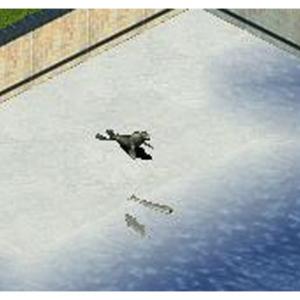About This File
The hooded seal (Cystophora cristata) occurs mainly in the northern Atlantic ocean from Newffoundland to Greenland. Individuals have been reported as far west as iceland and as far south as Florida. The hooded seal gets it name from the enlarged, inflatable nose of the male. To inflate the hood, the male closes his nostrils and fills his nose with air. The male can also blow a bright red ballon (made from the nasal septum) out of one nostril instead of inflating the hood. Females also have a hood, but it smaller and is not inflatable.
Hooded seals prefer to live in deep water areas where there is thick floating ice. During early spring, females haul out on the sea ice to give birth to their pups. This is also the mating season, when males display to the females, using their hoods as threats to rival males.
Hooded seals feed on fish, cephalopods, shrimp, and mussels.
References:
Walker's Mammals of the World, Nowak, 1999
http://www.bbc.co.uk/nature/wildfacts/factfiles/602.shtml
Photograph:
http://www.americazoo.com/goto/index/mammals/330.htm
Created by Ghirin 2003



Recommended Comments
There are no comments to display.
Create an account or sign in to comment
You need to be a member in order to leave a comment
Create an account
Sign up for a new account in our community. It's easy!
Register a new accountSign in
Already have an account? Sign in here.
Sign In Now